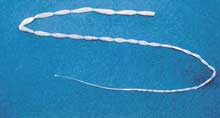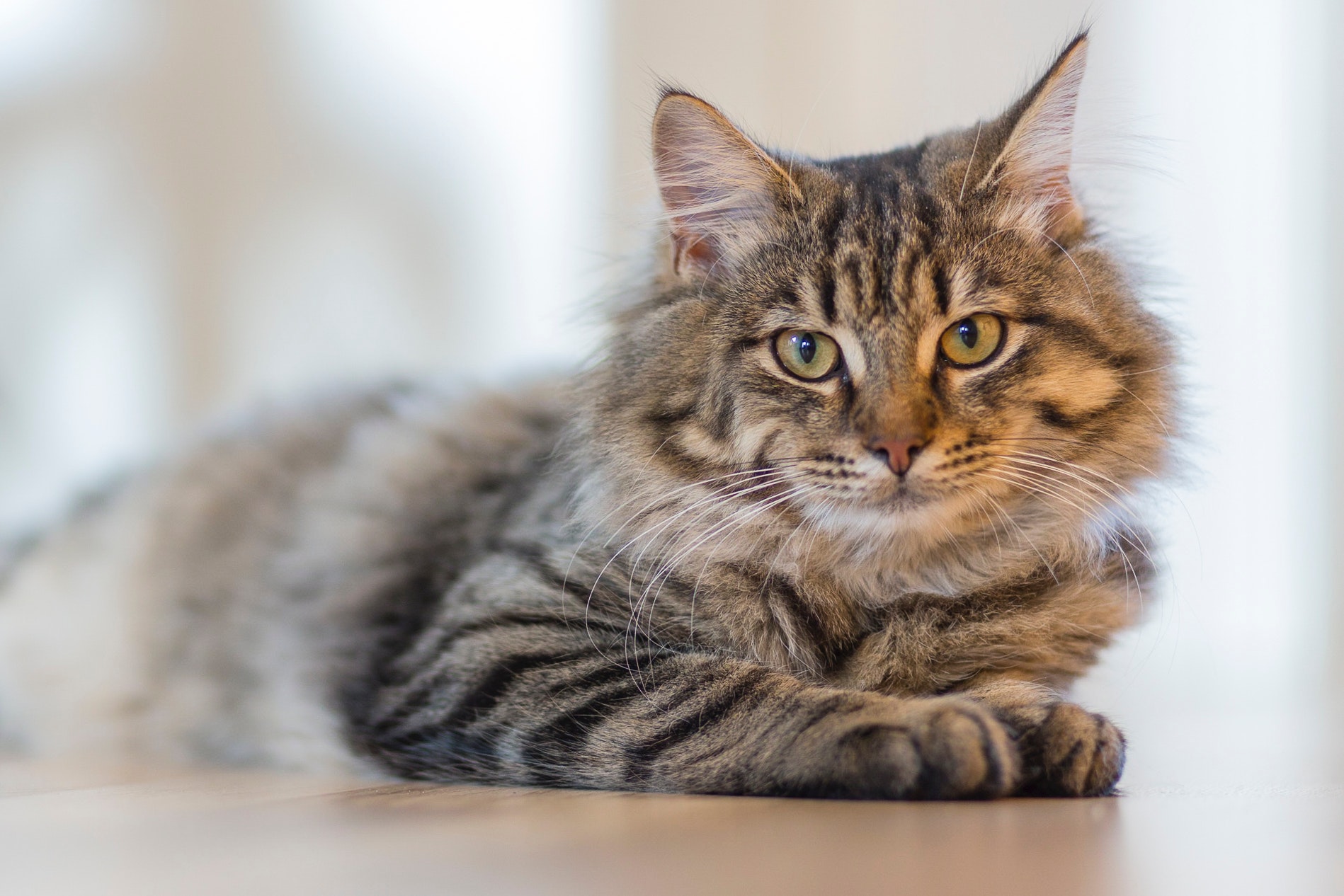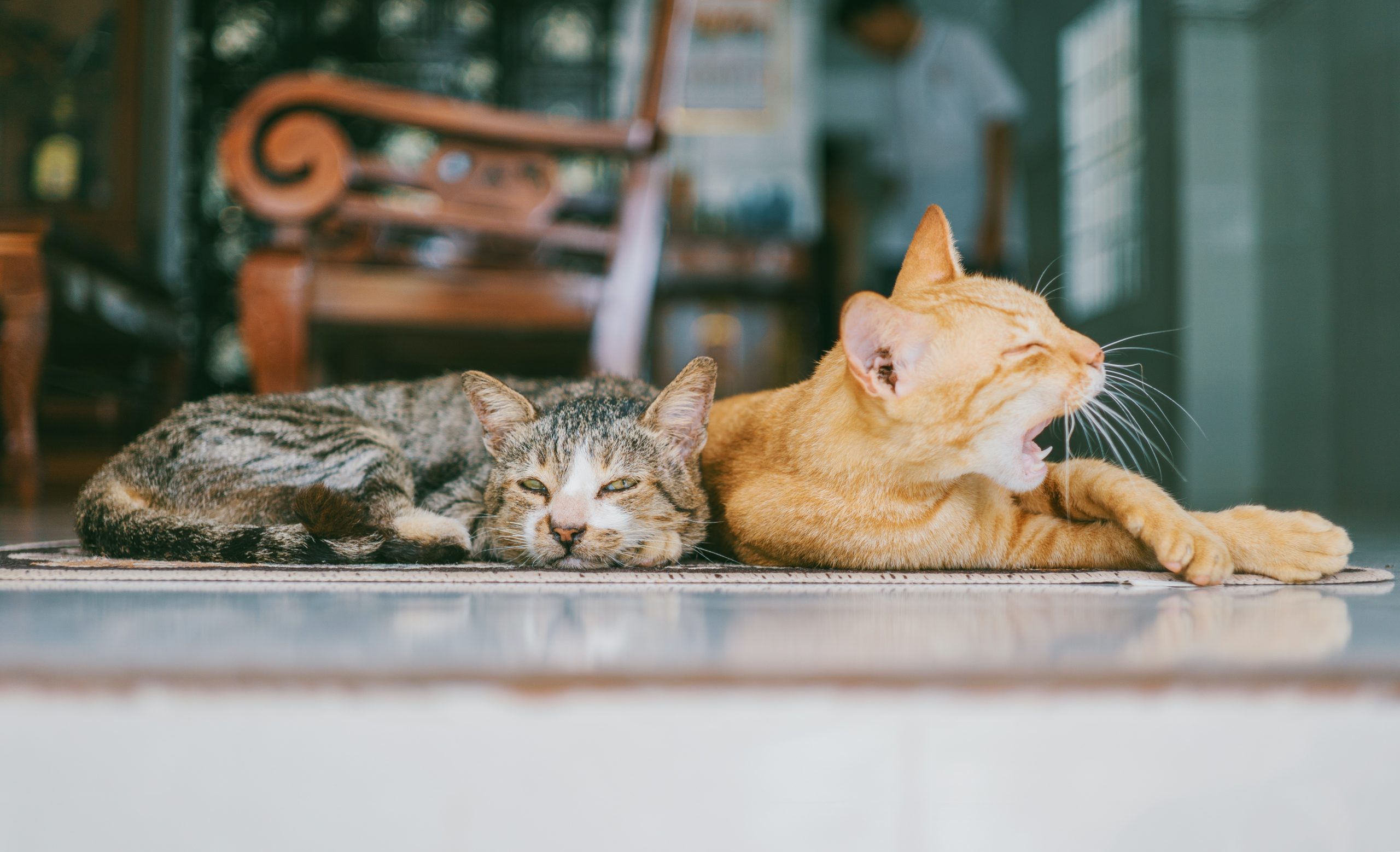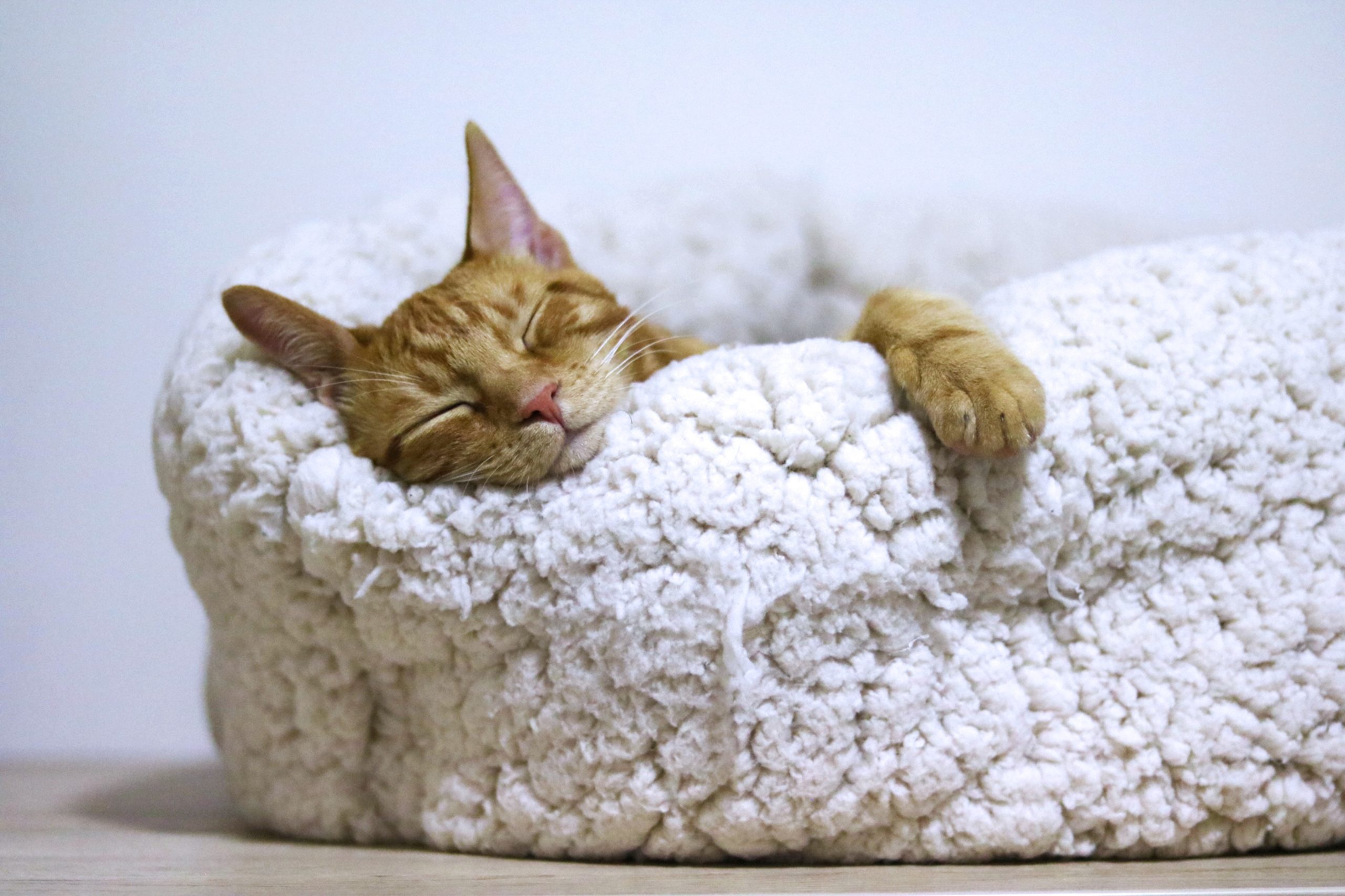Worms are highly infectious and are picked up by your cat from the ground, through the skin or via a kitten’s mother. Once infected, your cat’s health will be affected in some way, especially kittens. Worms can also infect people, particularly children, with serious consequences.
How can I tell if my cat has worms?
Signs of worm infection, depending on the type of worm, include:
- Change in appetite and a poor coat
- ‘Pot-belly’ appearance (especially kittens)
- Weight loss
- Diarrhoea and/or vomiting
- Anaemia (pale skin & gums)
- Worm segments (like rice grains) in droppings & around the anus
- Continual licking of anal area
- Death in severe cases
Hookworms
Hookworms are small worms that burrow into the pet’s intestinal wall and suck blood, causing weakness, anaemia, bloody diarrhoea and death in kittens, or a slower onset of weight loss and weakness. Infection can take place by ingestion of eggs in the soil, through the skin or through the mother’s milk in kittens. The hookworm larvae can penetrate the skin of humans, causing an itchy dermatitis.
Roundworms
Cats become infected with roundworm by swallowing eggs from the environment or by eating infected mice, birds and beetles. Kittens can be infected via their mother’s milk immediately after birth. Adult worms in the intestine are quite long, up to 10cm, and cause blockage as well as reduced appetite. The main sign of ‘wormy’ kittens is failure to grow (ill-thrift), a ‘pot-belly’ appearance and death in severe cases.
Humans can accidentally ingest infective eggs from both dog and cat droppings that attach to dirt, bedding and feed bowls. This can cause a serious disease, Visceral Larva Migrans (VLM), especially in children who are in frequent contact with their pets and the soil in backyards. Migrating larvae hatched from the infected eggs cause damage to the liver and occasionally the eyes or nervous system.
Tapeworms

Flea tapeworms are a common parasite in dogs and cats and are spread by fleas. Part of the tapeworm’s lifecycle develops in fleas & when a cat eats an infected flea (mostly during grooming) the tapeworm develops in the animal’s intestine.
The tapeworm can be up to 50cm long but usually only single segments (containing eggs) are seen in the cat’s faeces or around the tail and anus – like rice grains – causing itchiness and continual licking. Infection is not usually serious and people are rarely infected.
Other tapeworms in cats include Taenia taeniaeformis and Spirometra erinacei (Zipper worm) – these may be a problem in outdoor cats that regularly hunt rodents, lizards and other wildlife. Hydatid tapeworms do not occur in cats.
How often do I need to worm my cat?
Regular worming is essential – every 3 months in fact for adult cats. While treatment kills worms present in the intestine at the time, re-infections can occur from other pets and the environment. Once is not enough.
Kittens need to be wormed at 6, 8, and 12 weeks then 3 monthly. Pregnant and lactating queens should be treated prior to mating, ten days before kittening, and two to four weeks after kittening.
Worming tablets or pastes are commonly used and the most effective ones are available from your vet. There are also some multi-purpose spot-on products available that will treat roundworms and hookworms monthly in cats, as well as fleas and heartworm.
There is also a stand-alone spot-on product (Profender) that controls hookworms, roundworms and tapeworms in one easy treatment. 3-monthly application for adult cats kills all infective stages of the relevant intestinal worms in cats in Australia. Not all worming medications kill all worms.
Please check the label or contact your vet for the best worming advice concerning your cat.
Tips on worm prevention
- Always wash your hands after playing with your pet to prevent ingesting any worm eggs on the animal’s coat
- Worm eggs live for a long time in the soil so always wash your hands after playing and working in your yard, or wear gloves
- Avoid cats licking you and your family about the face
- Remove cat and dog droppings from your yard and litter trays
- Clean bedding and feed bowls regularly
- Worm any other pets in the household as well
- Control fleas on your pets



